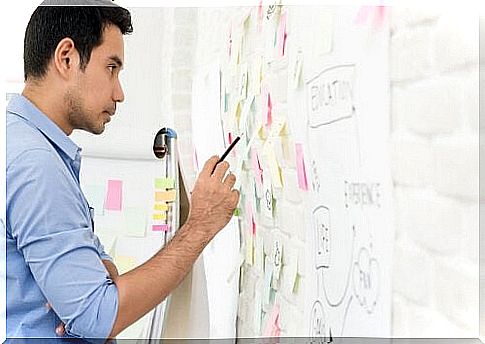Self-regulated Learning: Why Is It Important?

Self-regulated learning is closely related to the way people regulate their emotions, thoughts, behaviors and environmental aspects during the learning process. In addition, we know that it is important to be able to control your mind when it comes to the learning process. The sooner you learn to do it, the more successful and satisfying the experience will be.
There are many self-regulating abilities. Some of them are good time planning, the ability to choose the best problem-solving methods and the ability to actively control emotional states such as frustration.
Barry Zimmerman is one of the most important researchers in the field of self-regulated learning. He emphasizes that self-regulation is not a mental or academic achievement. Rather, it is a self-governing process through which students can transform their mental abilities into academic ones.

According to Zimmerman, self-regulated learning involves not only achieving detailed knowledge of an ability, but also other abilities such as self-awareness, self-motivation and the ability to behave in a way that makes it possible to apply what you have learned in an appropriate way.
Beginner students value themselves by comparing themselves with others and receiving feedback from them. They also often blame failures for shortcomings over which they have no control. On the other hand, more experienced students who can regulate their own learning accept the fact that they have failed when it occurs. Instead of blaming their mistakes, they focus on fixing their weaknesses.
If we look at it from a different point of view, it is not the case that self-regulation is something that some students have and others do not. According to Zimmerman, self-regulation consists of applying specific processes selectively to each learning task. These must be selected based on personal characteristics. This is why it is best to talk about self-regulation in the context of learning or some specific type of learning.
Self-regulated learning involves establishing goals and then choosing the right strategies to achieve them. Once selected, the process must be monitored, and if the goals are not achieved, the techniques must be restructured.
You must also use your available time effectively, evaluate the methods you have chosen and adapt your methods to future learning. Of course, you should always apply the new you have learned to future endeavors.
Self-regulated learning abilities are fundamental to learning. Despite this, it is unusual for educators to teach them specifically. This is why many students ultimately lack independence, motivation, perseverance and a positive sense of well-being during their studies.
In order for educators to be able to transfer these abilities effectively to their students, it is important for them that they are intimately familiar with the most important mechanisms in self-regulation.
Students go through three main steps when they regulate their own learning: planning, execution and reflection. These stages do not necessarily follow one another. Students can go through several different cycles during the course of a learning task.

- During the planning phase, students establish their goals and standards. They should be able to meet these in the course of a specific task, passport or course. This stage involves the student’s perception of the learning environment.
- During the execution phase, students show their commitment to the learning experience. At this point, they are monitoring their own learning. They can compare their progress with the standards they have established in the planning phase.
- During the reflection stage, the student thinks about and evaluates his or her learning experience. This includes reflecting on the feedback and mentally gathering ideas and concepts for future learning.
Due to the importance of self-regulatory learning, it is essential that teachers explicitly teach these abilities. They must also offer strategies to help students apply them during the learning process. This learning process includes, but is not limited to:
- Explanation of the usefulness and importance of self-regulated learning abilities.
- Explicitly teach self-regulating learning techniques.
- Help students identify when and how they can use these self-regulated learning abilities.
A study conducted in 2012 by Dignath-van Ewijk and Van der Werf that focused on teachers’ self-regulated learning perceptions showed that teachers believed in teaching these abilities to their students. The results of the study highlighted how teacher education would give them the ability and knowledge to promote self-regulated learning in an effective way.
We should develop strategies for educators to be able to teach self-regulated learning techniques to students. This would include tools, resources and strategies that they can use in the classroom.









